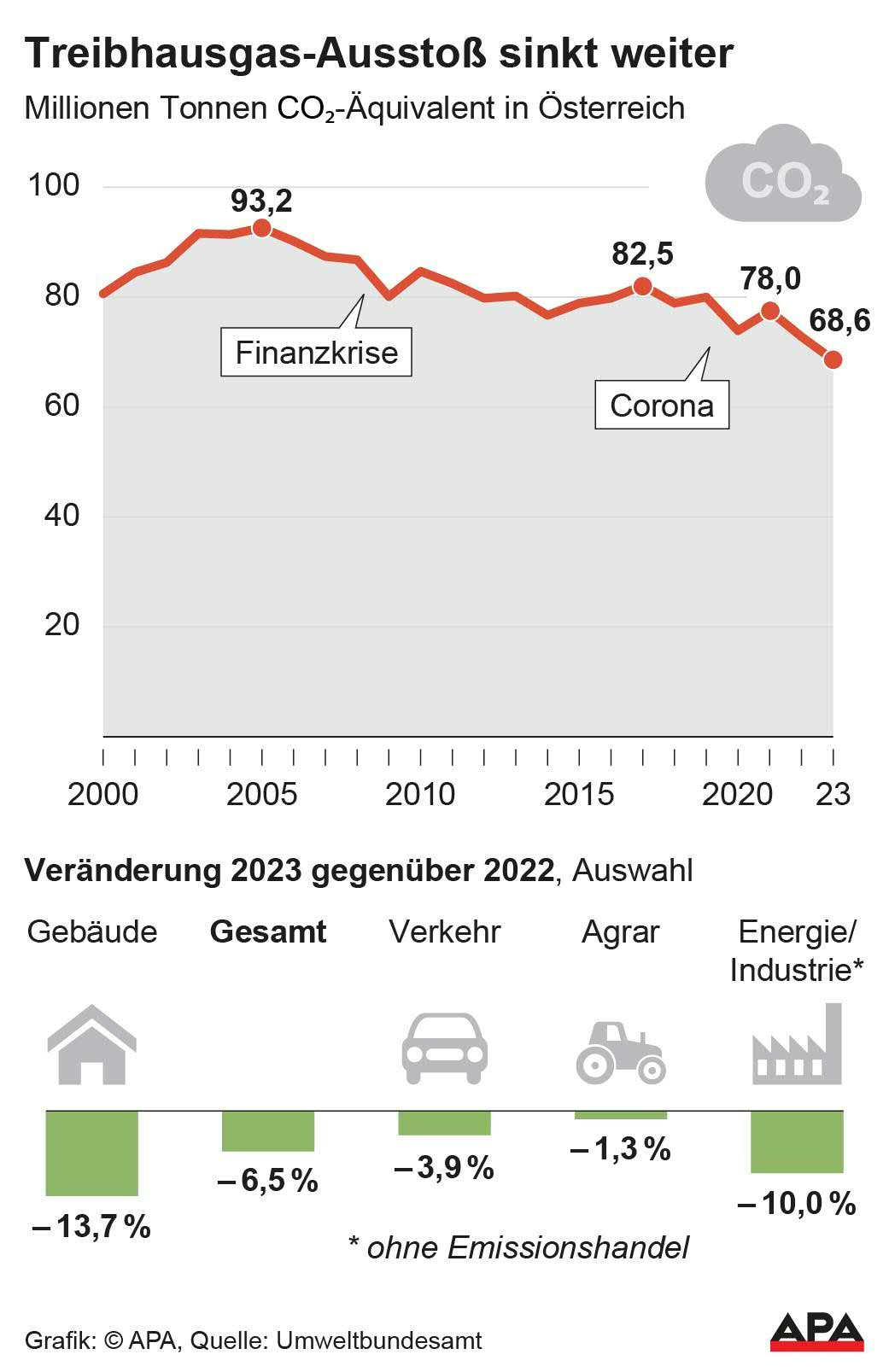Greenhouse Gas Emissions in Austria Decreased
In total, the value of emissions in 2023 was around 68.6 million tonnes, thus falling below 70 million tonnes for the first time. Climate Protection Minister Leonore Gewessler (Greens) urged the new government not to abandon this "good path".
Climate Protection Measures as a Factor
In the "Nowcast" forecast from last August, the decline was just below the new value at 6.4 percent. This is due to various factors, including economic influences - the gross domestic product GDP fell by one percent in 2023 compared to 2022, the persistently high prices for fossil energy, and the mild weather in 2023 (3.1 percent fewer heating degree days than in 2022). However, according to the UBA, the majority of the emission reduction is due to climate protection measures and the increased use of renewable energy, as also shown by a corresponding analysis from the Wegener Center.
"After decades of standstill, we have set Austria on course for climate neutrality by 2040. The next government must not abandon this good path, otherwise our children will pay a high price for climate destruction," said Climate Protection Minister Leonore Gewessler (Greens) on the figures. Climate protection is not only a must to avoid penalties, but also an economic engine, added Günther Lichtblau, climate expert at the Federal Environment Agency.
Five Sectors with Emission Reduction
There was a reduction in emissions in five out of six sectors outside of emissions trading, only in the waste management sector was there a slight increase of one percent in 2023 compared to 2022 due to higher emissions from combustion. Due to the lower natural gas consumption in the energy and industry sector (excluding emissions trading area), the GHG emissions here fell by ten percent in 2023.

Overall, emissions outside the European Emissions Trading System (Non-ETS sector) have been reduced by 5.5 percent or around 2.6 million tonnes of CO2 equivalent compared to the previous year. The target value for this sector - 45.2 million tonnes of CO2 equivalent for the year 2023 - was thus undercut by about one million tonnes.
For the energy and industrial companies that are assigned to the emissions trading (ETS sector), the current greenhouse gas balance for 2023 shows a significant reduction of 8.3 percent (around 2.2 million tonnes of CO2 equivalent). This is mainly due to the decreased electricity generation in gas power plants and production declines in the steel, cement, paper and chemical industries. The reduction targets for the emissions trading sector are regulated at the European level and are not included in the national climate targets, the Federal Environment Agency concluded.
"Foundation for Reduction of Climate-Damaging Gases is Laid"
Austrian environmental NGOs responded to the current figures with a warning to the incoming government not to abandon the path taken. "The foundation for the reduction of climate-damaging gases is laid. But the path towards climate neutrality 2040 is still long and time is pressing. It is fatal that ÖVP and FPÖ want to put the brakes on climate protection. This way we will not achieve the climate targets," said Jasmin Duregger, climate and energy expert at Greenpeace in Austria.
The generally positive development of greenhouse gas emissions shows that the right measures could still enable the achievement of the climate targets, according to Hannah Keller, climate and energy spokesperson at Global 2000. "However, the greenhouse gas balance also shows that the next federal government urgently needs to take further measures to ensure that the development continues in the right direction." The austerity plans known so far from the coalition negotiations, however, show "that massive cuts in climate protection are planned."
"Austria must systematically and permanently reduce its CO2 emissions. This requires reforms that cover all areas: from energy saving and the reduction of environmentally harmful subsidies to the protection of valuable nature. Only in this way will Austria become crisis-proof in the long term," said WWF climate spokesperson Karl Schellmann. To achieve the mandatory EU targets for 2030 and subsequently climate neutrality, more measures are needed in all sectors.
(APA/Red)
This article has been automatically translated, read the original article here.





